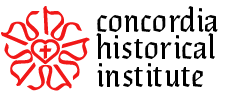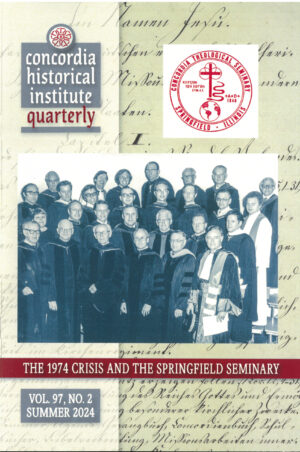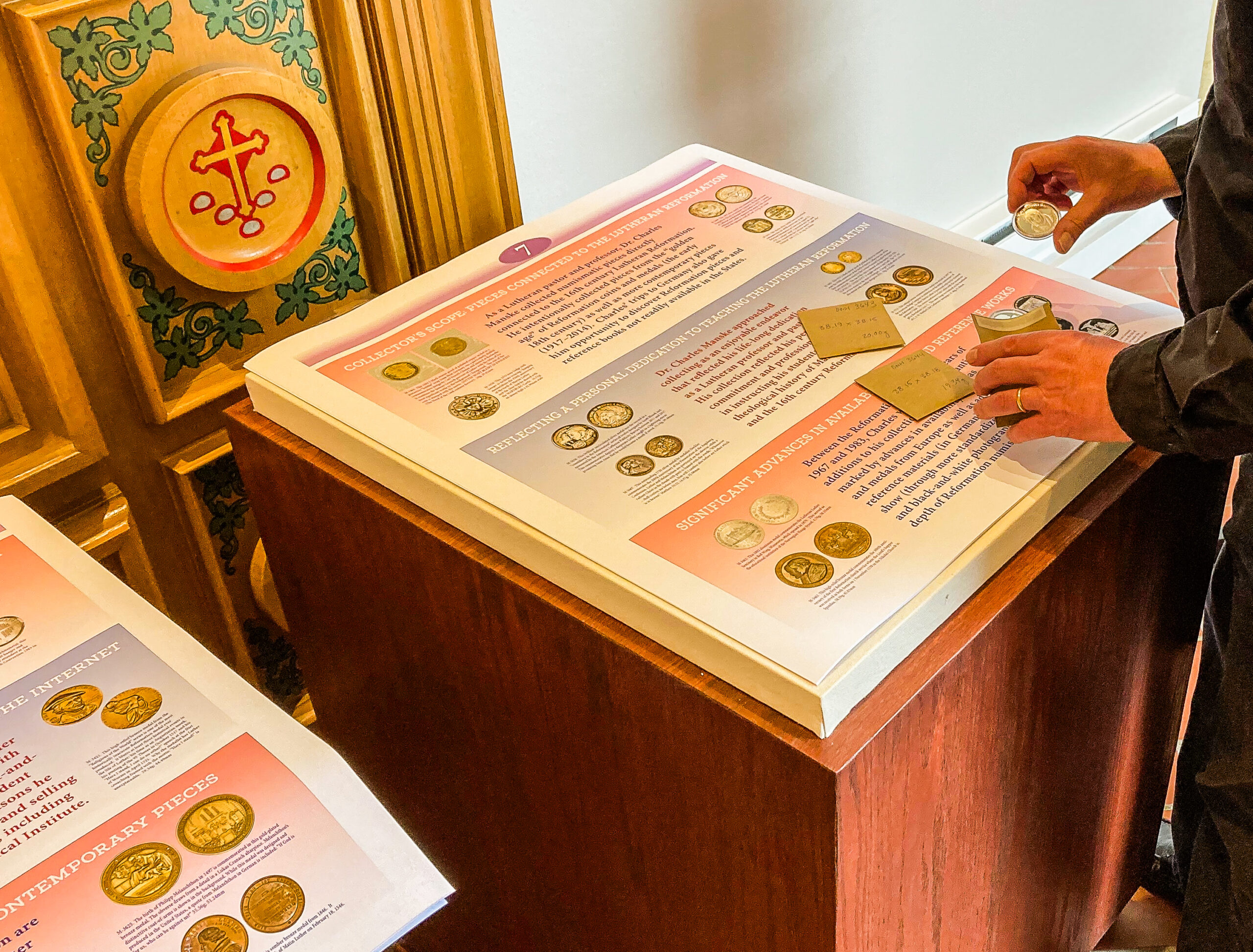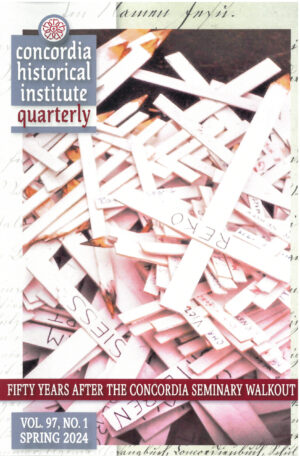Service Bulletin #5
All congregations have a history that is worth writing, but not all written congregational histories are worth reading. For a congregational history to be worth reading, it should contain the answers to questions put to any good news story: who, what, when, where, and how? Is the history is to be merely “propaganda,” or will it be a progressive picture that describes and analyzes the events of the past with a view toward the future? A good parish history should contain the following:
Historical Outline
Appoint a historical committee to research and develop a historical sketch of the parish. The committee will want to begin compiling available historical information. Normally, it is better for one person to conduct the actual research and write the story. The other members of the committee can assist the researcher by a making a preliminary survey of the church records to select items for the researcher to review. Members of the committee can also put together a list of any oral history interviews that may need to be conducted. It can also be the committee’s job to make the plans and arrangements for a special service or celebration to be held in conjunction with the completed historical picture.
The extent of such a committee’s involvements is largely dependant on the degree to which the congregational historical record will be used and the format(s) of the final product: pamphlet, celebration, service, etc. (See Service Bulletin #2) Resources on which the local parish can focus its research are minutes of the voters meetings; baptismal, confirmation, marriage and burial records; local newspapers, old church bulletins and programs; previous congregational histories; the parish paper or newsletter; and reminiscences of older members. Items that the historical researcher and historical committee should consider:
- How, where, when and why was the parish organized? Who assisted in its organization?
- Where did the people come from who participated in the organization? What were they looking for? What did they develop?
- Who were the pastors, teachers and lay persons who participated in the congregation’s building and growth? (Include photographs.) Compile a list of those who have served the parish since it began and the extent of their service. Include not only full-time church workers, but also vicars, student teachers, congregational officers, organists and others who served the congregation over the years.
- Who were the charter members? List them. Are any still living?
- What buildings have been used and are currently in use? How were they financed? Where were they located? How were they used? Use photographs. If photos are not available, you may wish to have an artist draw a picture on the basis of descriptions found in the records. If the congregation has ever relocated, it is important to include a map at this point.
- What was the parish’s association with the church at large? Provide details of synodical affiliation, financial support from mission funds, church extension, etc.
- Describe the worship life of the parish. This includes liturgical formats and style, hymnals used, languages, preaching, attendance, special festivals (Christmas, Easter, Reformation, Thanksgiving, etc.) and general conditions.
- What educational agencies and institutions have been used by the parish? Here the research should consider parochial schools (number of grades; how many years per course; textbooks; language used; percentages of attendance; non-Lutheran children; state support; unusual conditions; facilities; transportation; lunch program; teachers and their backgrounds; parental involvement), Sunday school, part-time educational agencies (V.B.S., Saturday school, released time), Bible classes, etc.
- What organizations does the parish have? Examples are ladies’ aid, young people’s organization, ushers’ club, dart ball or bowling leagues, parent-teacher league, Lutherans for Life, Aid Association for Lutherans branch, etc.
- If the parish was or is rural, include a map of the area served, pinpointing the locations of its buildings. If it is rural today, include a map for more ready identification and accessibility. If the name of the community or the post office address has changed, include and identify all names and changes.
- Add human interest stories wherever possible. Unusual events in the community may have affected the work of the congregation (economic, social, health, epidemics, war, legislation, etc.).
- If the congregation owned or owns a cemetery, include notes on its organization, number of burials, changes in its administration. Important tombstone inscriptions may also prove interesting. Locate the cemetery on a map if it is not adjacent to your present building.
- List sons and daughters of the parish who have entered the full-time work of the church.
- Identify ecclesiastical dates with calendar dates. Example: Jubilate Sunday 1960 was May 8. Many early records list only ecclesiastical dates.
Additional Information May Be Available at Concordia Historical Institute
After the resources of a local nature have been exhausted, there is a possibility that additional information may be obtained from the Concordia Historical Institute. (See online information on our reference services.) It standr ready to assist any individual or parish engaged in such research with the records at its disposal. It is preferable to have a representative of the parish do the research with the assistance of our staff. However, where great distances are involved, making such research too costly, we will be happy to assist in any way possible. In either case, the following procedure will be most helpful:
Fill in the “Record of Congregation” (Service Bulletin #5A) in as much detail as possible, giving dates and locations. Where information is lacking, mark “unknown.”
A list of pastors and teachers who served will cut down research time considerably. Check on biographical sketches of all men involved on the basis of the Institute’s “Biographical Record” (Service Bulletin #3A). References to ordination and installation published in the official publications of the Synod frequently contain notes on the parish. (See Service Bulletin #3 for techniques in gathering biographical sketches.)
Notices of groundbreaking, cornerstone laying, dedication, rededication, etc., of church buildings, appearing in the synodical publications may furnish helpful data.
During earlier years of Synod, traveling missionaries often published reports of their activities in Der Lutheraner that may have included the territory in which the parish under consideration was located.
District and synodical convention proceedings will supply the date on which the parish joined the Synod. The Statistical Yearbook supplies the date on which the congregation was organized. A word of caution: Such dates may not always be accurate or may refer to different events (earliest worship service, adoption of constitution, joining a synod, etc.).
The mission reports appearing in the district proceedings may furnish additional information. These are usually divided according to geographical areas or “mission fields.”
If it can be ascertained that the congregation at one time was Filial (a daughter congregation of another older parish), the history of the older congregation may yield some information.
District histories may contain references either to the pastors and teachers who served or to the parish itself.
The index to the Institute files may yield some manuscript materials.
The general index to the Concordia Historical Institute Quarterly may furnish additional information.
Note that the geographical name may have changed, and even parish names may have changed over a longer period of time. If this happens to be the case, a safer way to proceed is on the basis of the pastors who served rather than by the name of the parish or its location.
The older Statistical Yearbooks listed parishes by pastors’ names only, and not by geographical of parish names.
The Finished Product
If your historical committee produces a printed history (surely a desirable result), most members of your congregation will probably want a copy. Print it as nicely as can be reasonably afforded. Illustrate it well, and provide captions for the illustrations (with appropriate credit for photographs or other items obtained from the Institute or other sources). Many congregations have increased the value of their printed history by including transcribed lists of official acts (baptisms, confirmation, marriages and burials) as appendices. Finally, send 2 copies of the printed history to the Institute as well as to your district archives. Your state or local historical society would also appreciate a copy.
Copyright © 1997 Concordia Historical Institute, 801 DeMun Ave., St. Louis, Missouri, 63105
These bulletins may be freely reproduced & distributed, as long as the copyright, name, and address of the Institute are properly displayed.
Copyright © 1998 Concordia Historical Institute





